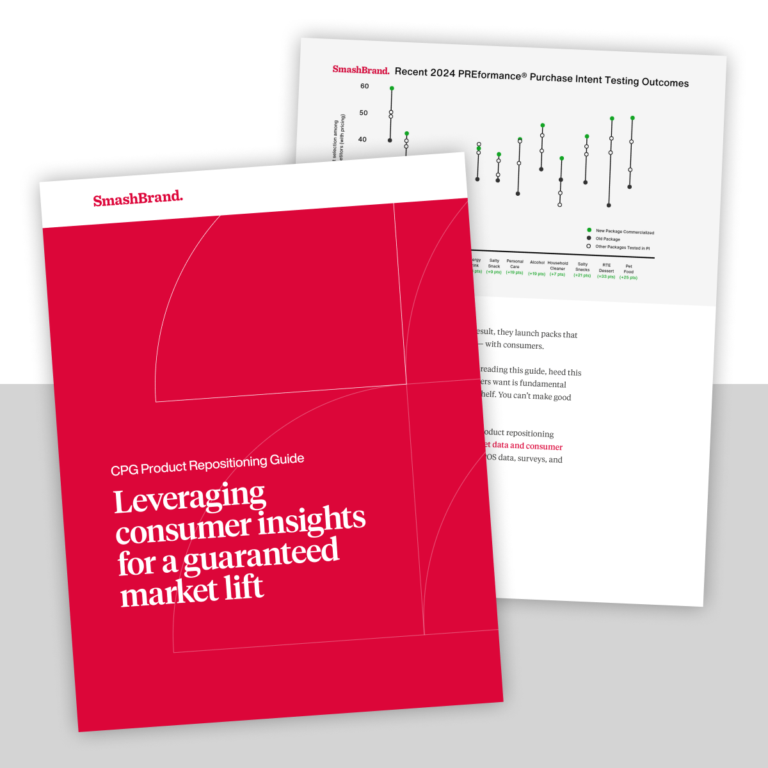Success in retail hinges on visibility and impact. A retail product audit dives deeper than standard store audits, exposing hidden opportunities to dominate the retail store. Aligning insights from retail store audit processes ensures your retail execution outpaces the competition.
This isn’t just about checking boxes—it’s about unlocking data-driven strategies that transform shelf presence and consumer engagement. Whether launching a new product or refining your packaging, a targeted store audit reveals the tweaks that can mean the difference between success and shelf obscurity. In retail, a strategic audit isn’t optional—it’s essential.
Why retail product audits are critical?
The retail landscape leaves little room for error. A single misstep in packaging, positioning, or pricing can derail store performance, eroding consumer trust and costing market share. Research reveals that 9 out of 10 product launches fail to deliver meaningful results, often due to gaps in execution. This is where a retail audit becomes essential, combining insights from market research and merchandising audits to optimize every aspect of your retail operation.
With retail audit services and advanced audit software, brands can pinpoint areas for improvement—from shelf placement to inventory management. By focusing on consumer-driven insights, these audits help align product strategy with actual shopper behavior, ensuring nothing is left to chance. The outcome? More substantial store presence, improved performance, and a product that resonates with its audience.
Key components of a retail product audit.
A thorough retail product audit combines merchandising, advanced software, and streamlined audit processes to optimize your business. From mystery shopping evaluations to detailed retail audit checklists, they ensure seamless store operations, effective retail auditing, and actionable insights empowering your entire operation.
Packaging performance.
Packaging is your product’s handshake with shoppers, making visual merchandising critical to driving sales. A shop retail audit evaluates the design’s visual appeal, ensuring it grabs attention and meets consumer expectations. Using a comprehensive retail store audit checklist, the retail audit process examines messaging clarity and its resonance with category purchase drivers, ensuring adherence to brand standards.
Retailers benefit from store audits beyond aesthetics, incorporating insights from compliance audits to ensure regulatory alignment and consistency. Even aspects like theft deterrents are considered during a loss prevention audit. By prioritizing packaging performance through these targeted evaluations, brands can create a product that doesn’t just sit on shelves but moves with impact.
Shelf presence.
Shelf presence defines how your product performs in a crowded retail space. A marketing audit evaluates its placement and visibility in a retail outlet, ensuring differentiation in intense retail industry competition. By leveraging inventory and operational audits, brands can analyze whether stock levels and positioning meet strategic goals.
Retail compliance assessments, guided by an audit checklist, ensure adherence to placement agreements and standards across every retail location. Input from the retail team and the store manager is pivotal in refining shelf strategy, with regular audits ensuring alignment over time. Reviewing audit results empowers brands to optimize presence, maximize impact, and claim a standout position in the consumer’s field of vision.
Messaging validation.
A thorough review of the communication hierarchy ensures product claims are clear, persuasive, and aligned with consumer expectations. The retail team evaluates packaging and in-store messaging using audit checklists to verify its impact on shoppers.
Retail merchandising assessments and operational audits ensure that messaging integrates seamlessly into the overall retail merchandising strategy, enhancing visibility and engagement. Feedback from the store manager offers practical insights into real-world performance, while audit results highlight opportunities to refine claims.
A step-by-step guide to conducting a retail product audit.
A successful retail product audit involves a structured approach to identify and address gaps in your product’s performance. This process ensures actionable insights for improved outcomes, from defining objectives to analyzing data. Below, we break the essential steps into detailed steps for clarity and execution.
Define objectives.
Defining objectives for a retail product audit begins with aligning audit goals to your broader business strategy. Start by pinpointing key success metrics directly impacting performance, such as purchase intent, shelf visibility, pricing perception, or competitive differentiation. Next, collaborate with stakeholders to ensure these objectives address immediate and long-term goals.
Prioritize specific, measurable KPIs to focus the audit, ensuring clarity in what success looks like. Once objectives are set, design the retail audit checklist to capture relevant consumer data, leveraging realistic testing environments.
Collect data.
Collecting data is crucial to uncovering actionable insights during a retail product audit. Start with consumer surveys to gather direct feedback on preferences, pain points, and purchase drivers. Supplement this with retail observations, assessing in-store dynamics such as shelf placement, visibility, and shopper interactions.
Finally, conduct competitive benchmarking to evaluate your product’s position relative to competitors, identifying strengths and gaps in performance. A multi-faceted approach ensures you capture a 360-degree view of your product’s retail effectiveness, providing the depth of understanding needed to refine strategies and maximize market impact.
Test in context.
Testing in context is critical for generating reliable insights into your product’s performance. Simulate real-world retail environments to evaluate how shoppers engage with your product among competitors. SmashBrand’s 10-second buyer journey analysis is a robust methodology to assess on-shelf visibility, messaging clarity, and purchase triggers during those crucial moments.
By replicating the retail experience, you can pinpoint areas where your product excels or needs improvement. This realistic testing ensures your product resonates with consumers, meets their expectations, and delivers a competitive edge in purchase scenarios.
Analyze and prioritize.
Start by identifying trends and correlations that reveal your product’s performance against KPIs like sales velocity, shelf impact, or pricing acceptance. Highlight actionable insights that directly influence these metrics and align with your business goals.
Prioritize initiatives based on their potential impact and feasibility, focusing on changes that deliver the greatest return on investment. This targeted approach ensures resources are directed towards efforts that enhance market performance, improve consumer appeal, and drive measurable results.
Iterate and optimize.
Leverage audit findings to refine critical elements like packaging, messaging, or pricing. This iterative process allows for adjustments based on consumer feedback and data before scaling changes across the market. Continuous optimization ensures your product is positioned to succeed while minimizing risk and maximizing impact.
Why does every CPG brand need this process?
Every CPG brand needs a retail product and inventory audit to ensure on-shelf performance, validate consumer appeal, and uncover potential issues before launch. This data-driven approach minimizes risk, aligns product presentation with shopper expectations, and provides a competitive edge in retail environments.
De-risk decisions.
By testing your product’s on-shelf performance, messaging, and design in realistic retail scenarios, you identify what resonates with shoppers and what doesn’t—before it’s too late. This process ensures your strategy aligns with purchase drivers, reducing costly missteps that can derail market success.
Rooted in objective, data-driven methodologies, audits help uncover blind spots, validate assumptions, and provide actionable recommendations. For CPG brands, this means confidence that every decision—whether a packaging redesign or product positioning—is optimized for real-world impact, ensuring your product meets consumer expectations and outperforms competitors at launch.
Boost ROI.
Boosting ROI with retail and inventory audits involves fine-tuning your product to maximize its appeal and effectiveness on the shelf. The audit identifies the elements influencing shopper behavior by analyzing key purchase drivers—design, messaging, and competitive positioning.
Optimizing these factors ensures your product captures attention, communicates value instantly, and converts more buyers. This leads to increased sales velocity, better category performance, and higher market share. With data-driven insights guiding decisions, you avoid wasted investments in ineffective strategies, ensuring every dollar spent drives measurable returns.
Fast track innovation.
A product audit accelerates innovation by providing actionable insights that streamline decision-making. Instead of relying on subjective opinions or lengthy trial-and-error processes, brands gain real-world data on what works—packaging designs, messaging, or product configurations—and what doesn’t.
This clarity eliminates bottlenecks, enabling teams to pivot quickly and confidently. By identifying and validating high-impact changes early, audits help brands optimize their strategies without wasting time or resources on ineffective ideas.
For CPG brands, this means faster go-to-market timelines, reduced development costs, and a competitive edge in meeting ever-evolving consumer demands. A merchandising audit turns innovation into a targeted, efficient process that drives results.
Future-proof the brand.
Future-proofing your brand with recurring retail business audits ensures you stay ahead in a dynamic market. By regularly assessing how your product performs on the shelf, you can adapt to shifting consumer preferences, emerging trends, and evolving competitive landscapes. Audits provide continuous feedback, highlighting areas for improvement or innovation before they become issues.
This proactive approach helps you maintain relevance, refine purchase drivers, and sustain a competitive edge. Integrating audits into the strategy is not just a safeguard—it’s a growth tool that ensures your brand evolves with the market, consistently delivering on shopper expectations and staying one step ahead of competitors.
Making retail product audits effective.
Effective retail audits require an objective and consumer-focused approach. SmashBrand eliminates guesswork by integrating strategy, creativity, and testing into one seamless workflow, ensuring every insight drives actionable outcomes. Our stage-gated methodology reflects the realities of retail dynamics, uncovering gaps and optimizing product presentation to maximize sales potential.
Integrated workflow for results.
SmashBrand’s methodology blends strategic foresight, bold creativity, and rigorous testing. Insights guide designs, ensuring they resonate with consumers and outperform competitors. This integrated approach, backed by cross-functional collaboration, guarantees outcomes that aren’t just data-informed but market-validated.
Confidence with PREformance® testing.
SmashBrand’s proprietary PREformance® Testing measures buyer behavior within real-world contexts. Each study combines large sample sizes and advanced diagnostics, delivering confidence-backed decisions and actionable strategies. Our iterative process ensures 95% confidence levels and measurable improvements, offering unparalleled precision.
Expertise rooted in client realities
SmashBrand combines agency ingenuity with a brand-side perspective. Our team speaks the language of brand managers, aligning with their KPIs and addressing their unique challenges. This balance ensures credibility, empathy, and practical solutions that resonate with clients and their consumers.
Frequently asked questions.
What is a retail product audit?
A retail product audit evaluates how your product performs on the shelf, analyzing packaging, placement, and consumer engagement to identify opportunities for improvement and maximize sales potential.
How can audits predict future consumer behavior?
By analyzing real-world data and PREformance® Testing outcomes, we identify emerging trends, shopper preferences, and purchase drivers, enabling proactive adjustments to capture future demand.
What role does consumer psychology play in retail audits?
SmashBrand’s methodology centers on the 10-second buyer journey, ensuring designs tap into subconscious triggers that influence purchasing decisions and create a compelling shelf presence.
Subscribe to
Nice Package.
A monthly newsletter that unpacks a critical topic in the FMCG & CPG industry.
Free Resource.

CPG product repositioning guide.
Explore the five undeniable signs your CPG product needs repositioning along with strategies for leveraging consumer insights for a guaranteed market lift.
Learn More About CPG product repositioning guide.